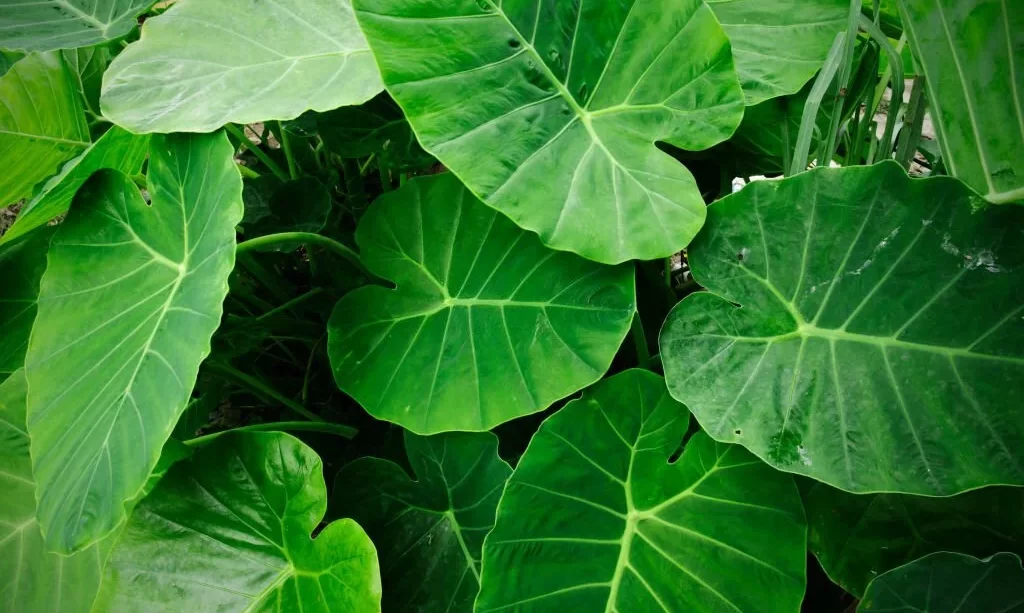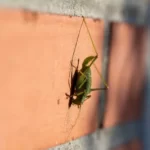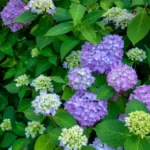With their colossal, lush leaves and striking presence, elephant ear plants, known by their scientific names Alocasia and Colocasia, have become prized treasures in the world of gardening. The desire to multiply these stunning foliage giants is a natural inclination for enthusiasts and those captivated by their beauty. This article embarks on a journey into the world of propagating elephant ear plants, uncovering the methods to grow more of these captivating botanical wonders. Whether you’re an experienced gardener or a budding plant parent, this guide will provide valuable insights into the art of propagating elephant ear plants, allowing you to expand your green paradise.
- Foliage:Deciduous, Sunlight:Full Sun
- Season Of Interest:Summer
- Foliage: deciduous, sunlight: full sun
- Season of interest: summer
Elephant Ear Plants
Before delving into the propagation techniques, it’s essential to grasp the nature and requirements of elephant ear plants. These tropical wonders are known for their expansive, heart-shaped leaves, which vary in size and coloration among different species. Elephant ears are native to warm, humid regions and thrive in well-drained, rich soil.
These plants are typically categorized into Alocasia and Colocasia groups, each with distinct features. Alocasia species often sport more ornate and unique leaf shapes, while Colocasia species boast larger and more classic elephant ear-shaped leaves. Understanding these differences is crucial as it impacts their care and propagation methods.
Propagation by Division
One of the most common and straightforward methods of propagating elephant ear plants is through division. This approach involves dividing a mature plant into smaller sections, each of which can grow into a new individual plant. Division serves multiple purposes, including rejuvenating older, overcrowded plants and increasing your elephant ear collection.
To propagate elephant ear plants by division, begin by selecting a mature plant that has outgrown its pot or garden space. Carefully remove the plant from its container or the ground, taking care not to damage the roots. Once the plant is out, inspect the rhizomes, which are the thick, underground stems that store nutrients.
Divide the plant into sections, ensuring that each section has healthy rhizomes and a few growing points. It’s important to use a clean, sharp knife or pruning shears to make clean cuts. Replant the divided sections in new pots or locations with well-draining soil, ensuring they have the same soil depth as before. Proper watering and subsequent care will encourage the newly divided sections to establish themselves and thrive.
Propagating elephant ear plants through division is not only an effective method for creating new plants but also for rejuvenating older ones, ensuring they remain healthy and vigorous for years to come.
Growing Elephant Ears from Offsets
Offsets, also known as pups or offshoots, are smaller plants that naturally develop alongside the parent elephant ear plant. These offsets are essentially new plants in miniature form, and they offer a straightforward method of propagation. Here’s how to propagate elephant ear plants from offsets:
Identifying Offsets:
- Elephant ear offsets typically emerge from the base of the parent plant or from the rhizomes.
- Wait until the offsets have developed several leaves and a healthy root system before attempting separation.
Separation Process:
- Gently remove the offset from the parent plant using a clean, sharp knife or shears.
- Ensure that the offset retains some roots and a portion of the rhizome.
- Repot the offset in a well-draining potting mix and provide appropriate care.
Offsets are a natural means of reproduction for elephant ear plants, and their successful separation and transplantation can lead to the growth of new, independent plants.
Propagating from Corms and Bulbs
Certain species of elephant ear plants, particularly Colocasia, propagate via corms or bulbs. These subterranean structures serve as energy storage units and provide a convenient way to start new plants. Here’s how to propagate elephant ear plants from corms or bulbs:
Corm and Bulb Harvesting:
- Wait until the parent plant enters its dormancy period, typically in late fall or winter.
- Carefully dig up the corms or bulbs from the soil. Be cautious not to damage them during this process.
Transplanting:
- Select healthy, firm corms or bulbs.
- Plant the corms or bulbs in a new location, ensuring they are covered with soil to a depth of about 2 to 3 inches.
- Water them thoroughly, but avoid overwatering, as this can lead to rot.
Corms and bulbs provide a means of propagating elephant ear plants when the parent plant enters its dormant phase. Understanding the specific requirements for the species you are propagating is key to successful growth from corms or bulbs.
Starting from Seeds
While not the most common method, propagating elephant ear plants from seeds can be an exciting endeavor for patient gardeners. Here’s how to start from seeds:
Seed Harvesting:
- Wait until the seed pods of your mature elephant ear plant have developed fully.
- Harvest the seeds when the pods split open, revealing the seeds inside.
Seed Planting:
- Plant the seeds in a seed tray or pots filled with a well-draining potting mix.
- Sow the seeds at a depth of about 1/4 inch.
- Maintain a warm, humid environment, such as a greenhouse or plastic wrap-covered tray, to encourage germination.
- Germination can take several weeks to several months, so be patient.
Once the seeds have sprouted and developed into seedlings, transplant them into individual pots or their final garden locations, providing the same care and attention as propagated plants from other methods.
Care and Maintenance of Propagated Plants
Regardless of the propagation method used, proper care and maintenance of propagated elephant ear plants are essential to ensure their health and vitality. Here are some key aspects to consider:
Light:
- Elephant ear plants thrive in bright, indirect light. Protect them from harsh, direct sunlight, which can scorch their large leaves.
Water:
- Keep the soil consistently moist but not waterlogged. These plants appreciate high humidity levels, so misting or using a humidity tray can be beneficial.
Soil:
- Use a well-draining potting mix to prevent waterlogged roots. A mix with organic matter and perlite is ideal.
Fertilization:
- Feed your elephant ear plants with a balanced, water-soluble fertilizer during the growing season. Reduce or stop fertilizing during the dormant period.
Pests and Diseases:
- Keep an eye out for common pests like aphids, mealybugs, and spider mites. Treat infestations promptly.
- Monitor for signs of fungal diseases, such as leaf spot, and take measures to prevent or manage them.
Winter Care:
- Elephant ear plants typically go dormant in winter. Reduce watering and provide less light during this period to mimic their natural conditions.
- OPTIMAL NUTRITION: Specially formulated with a 20-10-20 fertilizer ratio, our Elephant Ear Fuel provides the balance of essential nutrients for healthy growth and vibrant foliage. Your elephant ear plants will receive the ideal nourishment they need to flourish.
- REVITALIZES STRUGGLING PLANTS: If your elephant ear plants are showing signs of distress, our Elephant Ear Fuel Fertilizer can come to the rescue. Packed with minor elements and expertly crafted to meet the specific needs of elephant ears, this fertilizer will help revive and rejuvenate your plants, promoting healthy, happy and vigorous growth.
- PREMIUM WATER SOLUBILITY: Our fertilizer is water soluble, ensuring quick and efficient absorption by the plants’ roots. This means that the vital nutrients are readily available, allowing your elephant ears to absorb them easily for maximum benefit.
- CONVENIENT AND EASY TO USE: With Wellspring Gardens, convenience is key. Our Elephant Ear Fuel Fertilizer comes in a resealable bag, ensuring freshness and easy storage. The included instructions make application a breeze, allowing you to nourish your elephant ears effortlessly.
- EXCLUSIVE EXPERT FORMULATION: Crafted in partnership with industry experts, our exclusive formulation ensures that your elephant ear plants receive the ideal fertilizer ratio, unlocking their full potential for outstanding results.
Conclusion
Propagation is a delightful journey that allows you to multiply your collection of these magnificent plants. Whether you choose division, offsets, corms, bulbs, or seeds, each method has its unique charm and challenges. Successfully propagating elephant ear plants not only rewards you with new specimens to enjoy but also deepens your connection with these exotic tropical beauties.
As you explore the diverse methods of propagation, remember that patience and attentiveness are your greatest allies. Understanding the specific requirements of your chosen method and providing proper care are key to nurturing healthy, thriving elephant ear plants.
In conclusion, propagating elephant ear plants is an art and a science, a labor of love that enriches your garden and your connection with the natural world. Each propagated plant represents a piece of your horticultural journey, a testament to the enduring beauty and wonder of these extraordinary botanical treasures.





